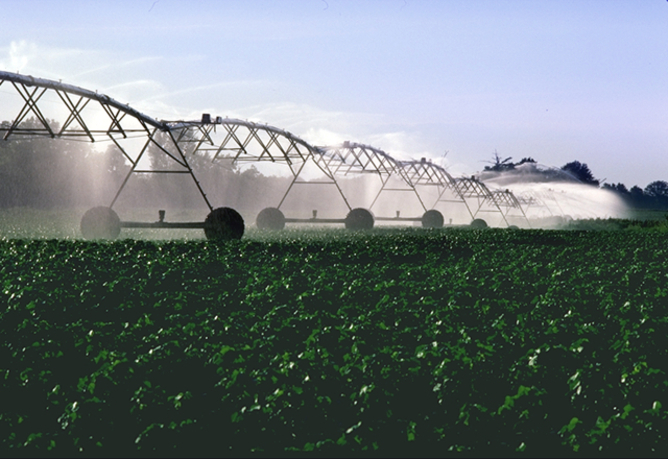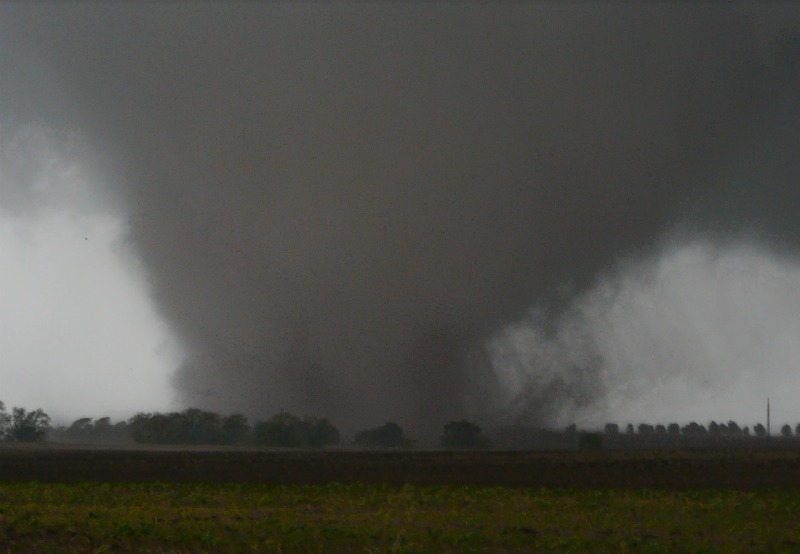Grim Harvest: Climate Change Sweeps Iowa Farms (Op-Ed)


Daniel Glick is the co-founder of thestorygroup.org, a Colorado-based multimedia journalism company. He was also one of the editors of the National Climate Assessment, and has written about climate change for many publications, including National Geographic and Newsweek. Glick contributed this article to Live Science's Expert Voices: Op-Ed & Insights.
Corning, Iowa, isn't the first place that people think of as ground zero for climate-change impacts . The gently rolling landscape in the southwest quadrant of this corn-fed state is punctuated by silver grain silos and carpeted in corn stalks and soybean rows. Farmers here know that sooner or later, commodity prices, fuel prices, seed prices and pretty much every type of weather that comes out of the sky will buffet their business. It's just the price you pay if you're a farmer, they'll say with a shrug — the price of being able to work some of the planet's most fertile soil and grow food for a nation.
Since he was 15, Ray Gaesser has planted, tended, harvested and sold crops through all kinds of conditions, good times and bad. In his 46 years of farming, he's learned to stay on top of all the variables he has to juggle, from international trade trends to new soybean-planting techniques. As president of the American Soybean Association, he also tries to keep up with everything from biotechnology advances to biodiesel policy changes.
But there's one thing he's intimately aware of every day, and that's the weather. Recently, Gaesser has had to contend with a new and unsettling trend: climate changes that are beyond his experience and the experiences of his neighbors and fellow farmers.
"Last year [2013], we had the earliest spring we've had in a long, long time — hundreds of years — started out about a month early," he said, stuck in his office on an unseasonably rainy, late June day. "We had a pretty good planting season and then all of a sudden the rain quit and we had one of the driest summers in 50-some years."
Turns out that one weird year deserved another. "This spring [2014], we had the latest start we've had in a long, long time. It started two to three weeks later than normal, and was the wettest spring in history here in Iowa.
"We've also had snow on May the second," he said, still shaking his head in disbelief at the strangeness of the event. "We had three-fourths of our corn under snow cover on May the second and that is almost unheard of."
Get the world’s most fascinating discoveries delivered straight to your inbox.
Gaesser obviously doesn't need a federal report to tell him that the climate is changing, but the 2014 National Climate Assessment certainly backs up Gaesser's observations with some disturbing data. The report, released in May, details a range of climate changes from around the United States. Extreme weather events are happening more frequently. Rainfall is coming in torrents, flooding towns and fields. Dry spells seem to come out of nowhere. When it's cold, it's really cold, and when it's hot, it's scorching. Texas and Oklahoma saw more than 100 days over 100 degrees Fahrenheit in 2012. The impacts on farmers are significant, and the federal report concluded that "climate disruptions to agriculture have increased in the past 40 years and are projected to increase over the next 25 years."
That isn't surprising to Gaesser, either. He's seen disease outbreaks when conditions are too wet, and lower yields when it's too dry. Until recently, he was pretty skeptical that climate change had anything to do with it. "Before the last three or four years, I guess my vision of the world of climate change was about a few people trying to make money on the deal," Gaesser said. He figured people were just marketing high-efficiency this and low-carbon-emission that, just to make a buck. "But as a farmer, in the last several years, we are actually seeing those changes happen here on the farm."
He's responded with a slew of new techniques, from no-till practices to planting cover crops, buying bigger machinery so he can plant during shorter windows of opportunity, and installing $1,000-an-acre underground drain tile to protect his soil from erosion when the heavy rainfall events hit the Great Plains and drop more moisture in an hour than used to fall in a day.
Like a lot of people in agriculture, Gaesser is used to changes — from season to season and year to year. Recently, he said, "Our need to adapt has had to speed up a lot. We're having more and more extreme events, whether it's heat or cold, or too much rain or not enough rain, all those kind of things are really causing us to make changes really fast and adapt to those much more quickly."
Gaesser hasn't given up — not by a long shot — but he knows he has his work cut out for him. "What is unnatural is the fast pace that we're having to adjust to," he said. "But if we don't adapt, we won't be farming much longer."
Follow all of the Expert Voices issues and debates — and become part of the discussion — on Facebook, Twitter and Google +. The views expressed are those of the author and do not necessarily reflect the views of the publisher. This version of the article was originally published on Live Science.
The only sure thing about weather forecasts is that they’re wildly different all over the planet. Test your knowledge on the wild ranges in temperature, precipitation and more.
Extreme Weather Facts: Quiz Yourself




